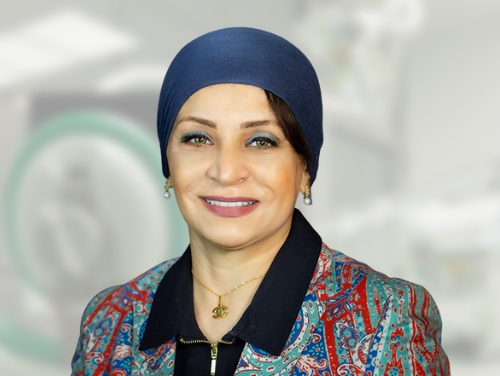Understanding the Different Types of Dental X-Rays and Their Uses
Dental X-rays are a crucial diagnostic tool in modern dentistry, offering insights that are often invisible to the naked eye. They help dentists detect issues such as cavities, bone loss, and infections early on, enabling timely and effective treatment. This comprehensive guide aims to educate readers about the various types of dental X-rays and their specific uses, helping patients understand what to expect and why these imaging techniques are essential for maintaining optimal oral health.
The Importance of Dental X-Rays
Dental X-rays play a critical role in various aspects of oral health care, including detecting hidden problems, monitoring development, and planning treatments.
- Detecting Hidden Problems
Dental X-rays reveal hidden dental structures, wisdom teeth, cavities, and bone loss. This early detection can save patients from more invasive and expensive treatments down the line.
- Monitoring Development
For children and adolescents, dental X-rays are vital in monitoring the development of teeth and jawbones. They help in detecting issues with tooth eruption, which can be addressed with orthodontic interventions if needed.
- Treatment Planning
X-rays are indispensable in planning treatments like implants, braces, and dentures. They provide a clear view of the patient's dental anatomy, ensuring precise and tailored treatment plans.
Types of Dental X-Rays
Dental X-rays can be broadly categorized into two types: intraoral and extraoral. Each type serves specific diagnostic purposes and provides different views of the mouth's internal structures.
- Intraoral X-Rays
Intraoral X-rays are the most common type of dental X-ray. They offer detailed images of individual teeth and surrounding bone structures, aiding in the detection of cavities, root infections, and bone loss.
- Bitewing X-Rays
Purpose: Bitewing X-rays are used to detect cavities between teeth and changes in bone density caused by gum disease.
Procedure: The patient bites down on a wing-shaped device that holds the film or sensor, capturing the crowns of the upper and lower teeth simultaneously.
Uses:
- Detecting decay between teeth
- Monitoring the integrity of dental fillings
- Checking for bone loss due to gum disease
- Periapical X-Rays
Purpose: Periapical X-rays focus on one or two teeth at a time, showing the entire tooth from crown to root.
Procedure: A small film or sensor is placed inside the mouth, capturing detailed images of the tooth and surrounding bone.
Uses:
- Identifying root infections and abscesses
- Detecting bone loss around the tooth
- Examining the root structure and surrounding bone for cysts or tumors
- Occlusal X-Rays
Purpose: Occlusal X-rays provide a broad view of the floor of the mouth and are used to detect developmental anomalies and track the placement of teeth.
Procedure: The patient bites down on a larger film or sensor, capturing the full arch of teeth in either the upper or lower jaw.
Uses:
- Locating extra teeth or teeth that haven't erupted yet
- Identifying fractures in the jawbone
- Detecting foreign objects in the mouth
- Extraoral X-Rays
Extraoral X-rays are taken outside the mouth and provide images of the entire jaw and skull. They are less detailed than intraoral X-rays but are useful for seeing how the teeth and jaws relate to each other.
- Panoramic X-Rays
Purpose: Panoramic X-rays capture the entire mouth in a single image, including all teeth, jaws, and surrounding structures.
Procedure: The patient stands or sits while the X-ray machine rotates around the head, taking a wide-angle image of the mouth.
Uses:
- Assessing the development of wisdom teeth
- Evaluating jawbone structure and alignment
- Detecting cysts, tumors, and infections
- Cephalometric X-Rays
Purpose: Cephalometric X-rays provide a side view of the head, focusing on the teeth, jaw, and profile of the patient.
Procedure: The patient stands or sits with the head positioned in a special device that holds it still while the X-ray is taken from the side.
Uses:
- Planning orthodontic treatments
- Assessing jaw alignment and growth patterns
- Analyzing the relationship between teeth, jaws, and facial structure
- Cone Beam Computed Tomography (CBCT)
Purpose: CBCT provides 3D images of dental structures, soft tissues, nerve paths, and bone in a single scan.
Procedure: The patient sits or stands while the CBCT machine rotates around the head, capturing multiple images to create a 3D model.
Uses:
- Planning dental implant placements
- Diagnosing complex cases involving the jaws and sinuses
- Evaluating bone quality and quantity
Safety and Frequency of Dental X-Rays
Dental X-rays involve low levels of radiation, making them safe for most patients, and modern digital X-rays reduce exposure further compared to traditional film X-rays. The frequency of dental X-rays depends on the patient's age, oral health, and risk factors for dental diseases, with new patients generally receiving a full set of X-rays, while routine check-ups may require bitewing X-rays annually or biannually. For pregnant patients or those with certain health conditions, dentists take extra precautions to minimize radiation exposure, such as using lead aprons and thyroid collars.
Contact Us Today To get Examed
Dental X-rays are an indispensable tool in modern dentistry, providing detailed insights that are crucial for accurate diagnosis and effective treatment planning. Understanding the different types of dental X-rays and their specific uses helps patients appreciate the importance of these imaging techniques. Regular dental check-ups and X-rays are essential for maintaining oral health, ensuring that potential issues are detected and treated early.
Contact Royal Dental
today for your next dental check-up.
Dr. Maha Enin, DDS
Dr. Maha Enin believes in providing the highest level of comprehensive quality care to all patients at Royal Dental Family & Cosmetic Dentistry. With 20 years of experience in dentistry, Dr. Enin also volunteers her free time at a dental clinic for families in the Manassas, VA community.













